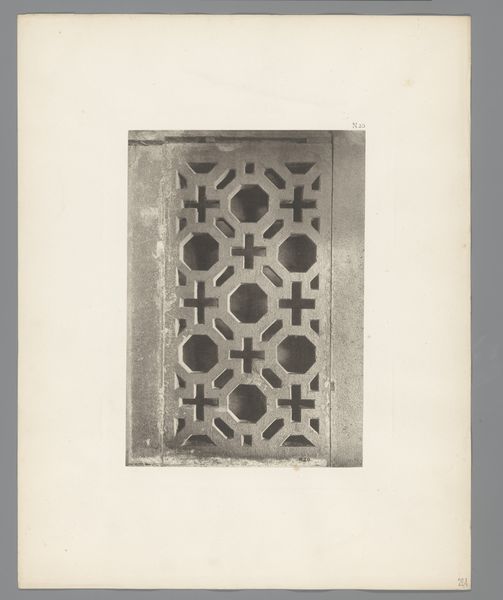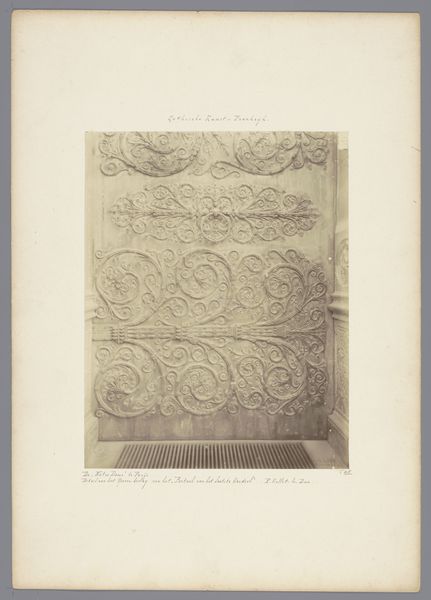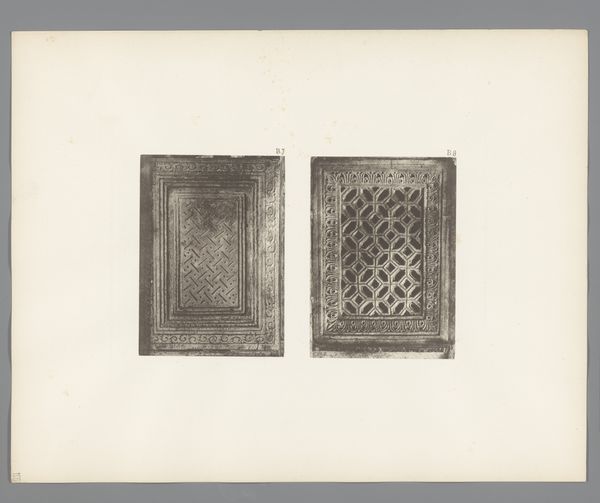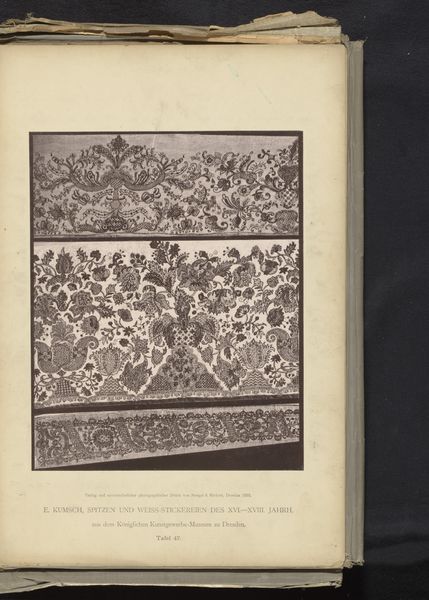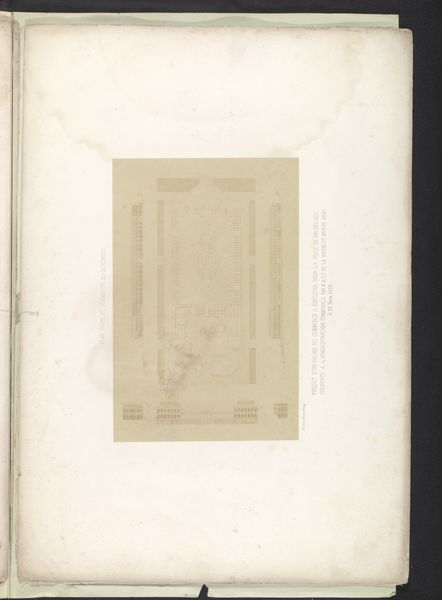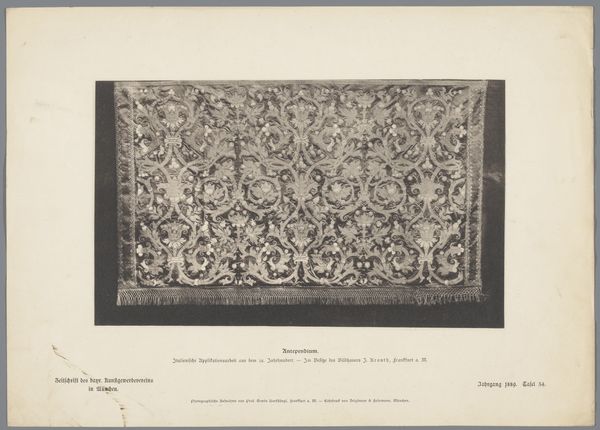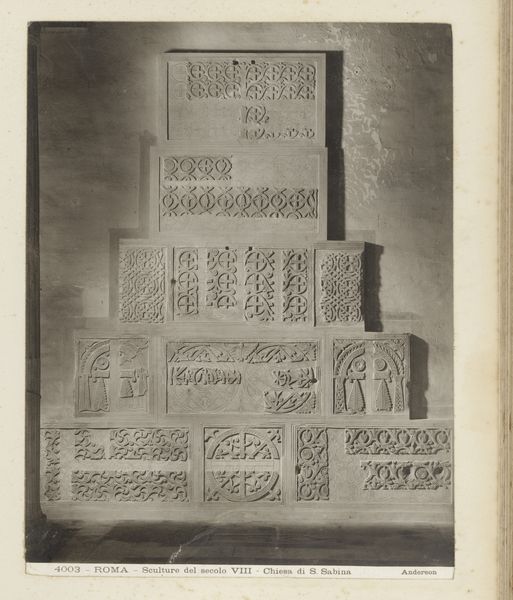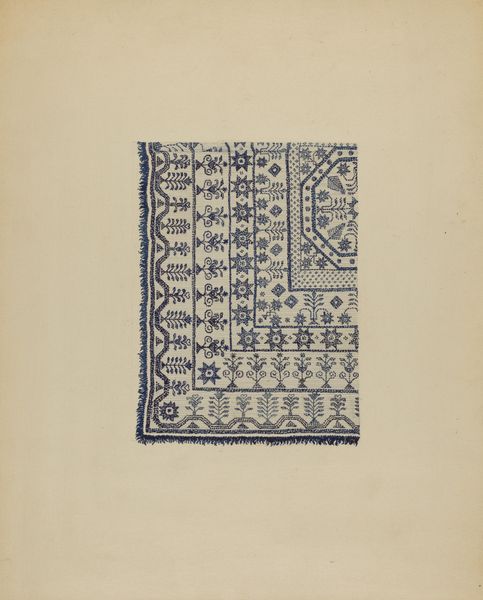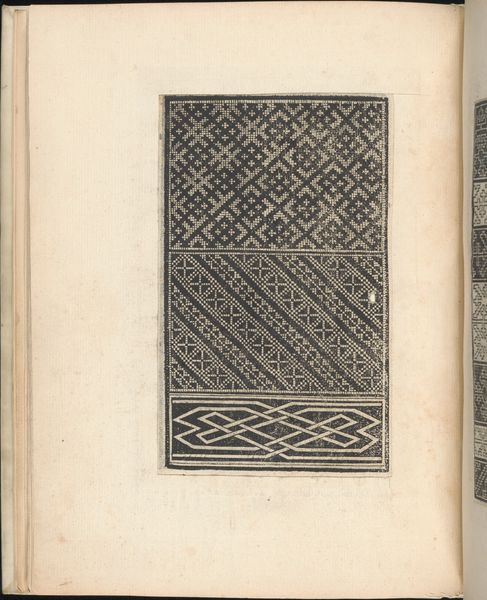
print, metal, photography
# print
#
metal
#
photography
#
geometric
Dimensions: height 244 mm, width 135 mm
Copyright: Rijks Museum: Open Domain
Curator: Looking at this, I’m struck by the feeling of confinement and security, perhaps. The tight geometric design is quite imposing, yet somehow beautiful. Editor: Agreed. We're examining a photographic print entitled “IJzeren poort afkomstig van het klooster van Le Puy-en-Velay” by Hippolyte Mallégue. Dating to before 1857, the image captures an iron gate originating from a cloister. This prompts considerations around notions of access, restriction, and labor. Curator: Exactly. Considering that the photo is of an iron gate, one has to wonder how it was crafted. Was this made with simple blacksmith tools or advanced machinery? What does that labor entail? The repetition and symmetry are clearly visible; you could imagine that forging all of these curling and waving pieces was an intense manual project, reflecting on both artisanal skill and material production. Editor: Absolutely. Ironwork like this was not only a display of technical ability but also social standing. It presents questions regarding the monastic communities and social structures. Iron, typically associated with the masculine sphere of labor and defense, becomes a boundary of the cloistered feminine space. How does this challenge traditional binaries? Curator: I like how you pick up on these gendered connotations. I can't help but wonder, in its own time period, who had the resources, knowledge, or political power to even photograph this kind of ornate gate? Or conversely, if these sorts of documents could allow a working-class artist, through reproducible medium, to study this style of gates to refine their own craft and class aspirations? Editor: Right. Consider also that the original function of such gates was both literal and symbolic, it controls physical access and reinforces a rigid power dynamic. Who gets in and out, and under what conditions? Early photographs like these helped colonial structures create records of resources and population. Was this image commissioned, and by whom? The act of photographic documentation itself participates in those hierarchies. Curator: It's amazing how a seemingly straightforward image can unravel such complex narratives about society, gender, labor, and status through a simple iron gate. Editor: Precisely. This work highlights the layers of history embedded in an everyday object and offers insight into the intersection of faith, gendered labor and social control during this historical time.
Comments
No comments
Be the first to comment and join the conversation on the ultimate creative platform.
